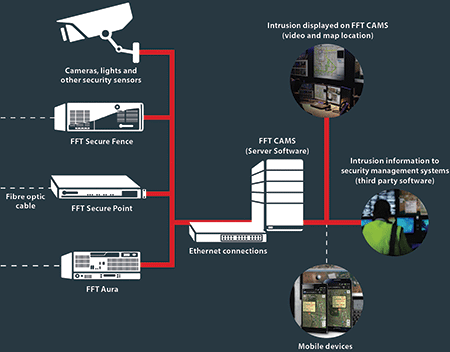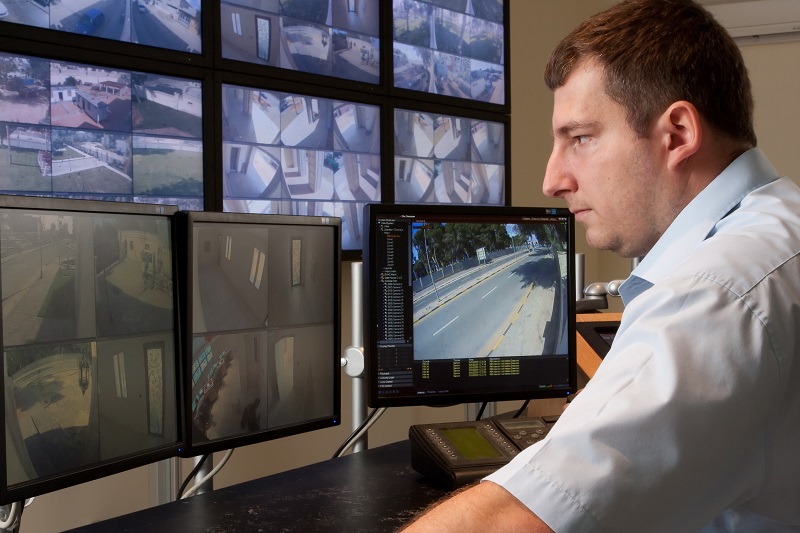Secure Your Home With Reliable Fiber Optic Safety And Security Solutions
In an era where safety hazards are progressively advanced, the demand for reliable protection options is critical. Fiber optic security systems stand out by offering exceptional reliability and efficiency, leveraging advanced light transmission technology to enhance surveillance capabilities. These systems not just provide immunity to electromagnetic disturbance but likewise assure long-term price efficiency through lowered maintenance requirements. The choice to invest in such a solution entails careful factor to consider of numerous elements. Understanding the details of fiber optic safety and security can brighten the course to securing your property better. What aspects should be explored to maximize your investment?
Benefits of Fiber Optic Protection
Fiber optic protection options provide a series of benefits that make them progressively crucial in today's electronic landscape. One of the most significant benefits is their premium bandwidth capacity, which enables the transmission of big quantities of information over long distances without substantial signal destruction. This ability is specifically helpful for security systems that rely upon high-def video clip surveillance and real-time surveillance.
Furthermore, fiber optic cables are naturally much more secure than typical copper electrical wiring. They are unsusceptible to electro-magnetic interference, making them less prone to hacking or eavesdropping. This enhanced safety is essential for shielding sensitive data and preserving the honesty of surveillance systems.
Moreover, fiber optics are much more long lasting and immune to environmental factors, such as wetness and temperature level variations, guaranteeing long-lasting integrity and decreased upkeep prices. The lightweight nature of fiber optic cable televisions additionally streamlines installment processes, permitting better flexibility in system design.
Exactly How Fiber Optic Equipment Job
In contemporary safety applications, the operation of fiber optic systems counts on the concepts of light transmission with versatile glass or plastic fibers. These fibers are developed to bring light signals over long distances with marginal loss, making them excellent for sending information connected to safety and security tracking. The core of the fiber, bordered by a cladding product, ensures that light signals continue to be had within the core through a sensation referred to as total interior representation.
When integrated right into security systems, fiber optic cables can send information from various sensors, such as cameras, movement detectors, and alarm systems, to a main monitoring station. The high bandwidth capability of fiber optics allows for the transmission of huge quantities of data at the same time, making it possible for real-time surveillance and timely reaction to possible dangers.

Types of Fiber Optic Security Solutions
Different kinds of fiber optic protection services have actually emerged to boost monitoring and protection throughout different atmospheres. One popular solution is fiber optic perimeter invasion discovery systems (PIDS), created to monitor and safeguard residential property limits with the detection of vibrations and disturbances along fiber optic cable televisions. These systems supply real-time notifies, enabling prompt responses to unapproved gain access to efforts.
Another reliable option is fiber optic video clip monitoring. This technology leverages high-def video cameras linked through fiber optic wires to send video data over lengthy ranges without significant loss of high quality. This arrangement is specifically useful in large locations, such as airports and industrial websites, where typical copper cables may falter.
Furthermore, fiber optic sensing units are increasingly utilized for environmental tracking, identifying changes in temperature, pressure, or acoustic signals that could indicate safety and security violations or harmful problems. These sensing units supply high level of sensitivity and accuracy, making them optimal for important framework defense.

Installation and Upkeep Tips
Efficient installation and upkeep of fiber optic safety services are essential for guaranteeing their ideal performance and long life. Fiber optic cords ought to be routed securely, staying clear of sharp bends or twists that could endanger their stability.
Throughout setup, it is recommended to perform comprehensive testing of the system to validate that all elements are operating correctly. Regular maintenance checks need to be arranged to inspect the fiber optic cords for any indications of wear or damage, in addition to to ensure that my review here links continue to be safe. Cleaning the ports occasionally is likewise essential to avoid signal loss as a result of dust or particles.
Furthermore, keeping an upgraded inventory of set up parts and their specifications can assist in easier troubleshooting and upgrades. By sticking to these installment and maintenance ideas, home proprietors can take full advantage of the performance of their fiber optic safety and security options, making certain a reputable protection versus potential risks.
Comparing Expenses and Performance
When assessing fiber optic safety options, recognizing the equilibrium between costs and effectiveness ends up being vital (security fibers). Organizations has to take into consideration the upfront investment, ongoing maintenance expenses, and the long-term value these systems offer. While fiber optic systems may require a higher initial installation cost compared to traditional copper wiring, their resilience and decreased vulnerability to electromagnetic interference frequently translate to lower upkeep expenses with time
Performance is an additional important aspect; fiber optic safety systems use improved data transmission speeds and boosted integrity. They can cover larger distances without signal degradation, making them excellent for large homes or remote places. Additionally, the high data transfer ability supports advanced security applications, such as high-def video surveillance and real-time surveillance, which are crucial for detailed safety and security management.
Ultimately, the option between expense and effectiveness need to be directed by specific safety requirements and take the chance of evaluations. Organizations has to evaluate their unique demands, considering aspects like residential or commercial property dimension, safety and security hazards, and technological improvements. By conducting a complete cost-benefit analysis, stakeholders can make educated choices that align with their safety and security purposes while ensuring a sound financial investment in fiber optic technology.
Final Thought
In final thought, fiber optic safety remedies offer significant advantages in terms of performance, integrity, and resistance to environmental interferences. Ultimately, the fostering of fiber optic modern technology represents a forward-thinking method to safeguarding residential or commercial properties against advancing site web protection risks.